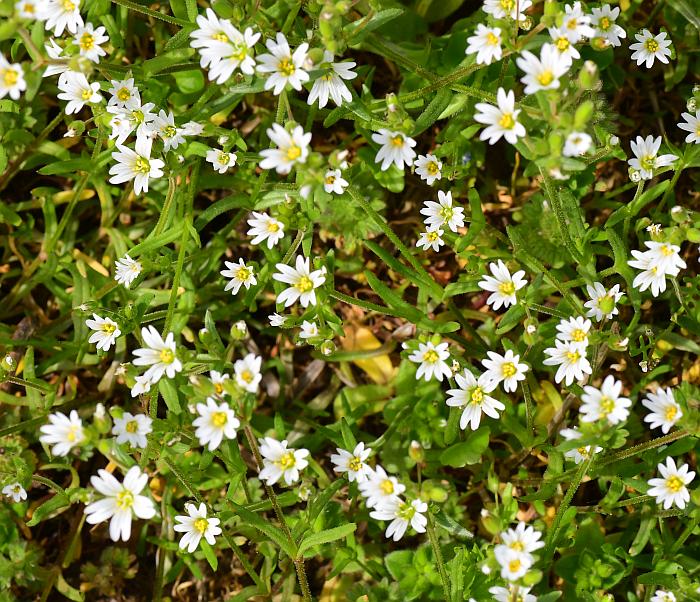Cerastium dubium (Bastard) Gupin
Doubtful Chickweed

Introduced
CC = *
CW = 5
MOC = 6
© SRTurner
Cerastium dubium (Bastard) GupinDoubtful Chickweed | |
 |
Introduced CC = * CW = 5 MOC = 6 |
© SRTurner |
|
Family - Caryophyllaceae Habit - Annual forb. Stem - Ascending to nearly erect, sometimes sprawling with age, to 50 cm, often multiple from a cespitose base, glandular-pubescent.
Leaves - Opposite, entire, linear to narrowly lanceolate, sessile, to 3 cm, usually with glandular hairs.
Inflorescence - Dichasial cymes, pubescent with short glandular hairs.
Flowers - Bracts entirely herbaceous. Sepals 5-6 mm, glandular-pubescent, margins hyaline. Petals exceeding sepals, moderately deeply notched at tip, white. Stamens 10. Styles 3.
Fruit - Capsules straight, cylindrical, 8-11 mm, brown at maturity, dehiscing with 6 apical teeth.
Flowering - March - April. Habitat - Crop fields, disturbed areas. Lookalikes - Other species of Cerastium, and to a lesser extent, Stellaria. Origin - Native to Europe. Other info. - This species was first reported in the U.S. in 1966, in the state of Washington, and was first collected from Missouri in 2012. It is easily distinguished from other Missouri members of the genus, being showier and (usually) with flower centers appearing bright yellow from shed pollen. Additionally, leaves are very narrow and styles 3 in number instead of the usual 5. Dehiscent fruits have 6 apical teeth, rather than the 10 present in other members of the genus. The plant can form huge populations in alluvial farmland or other crop fields, which seems to be a preferred habitat. Photographs taken near Labadie, Franklin County, MO, 3-31-2012, 4-12-2016, 4-25-2021, 4-9-2022, and 4-7-2023 (SRTurner). |